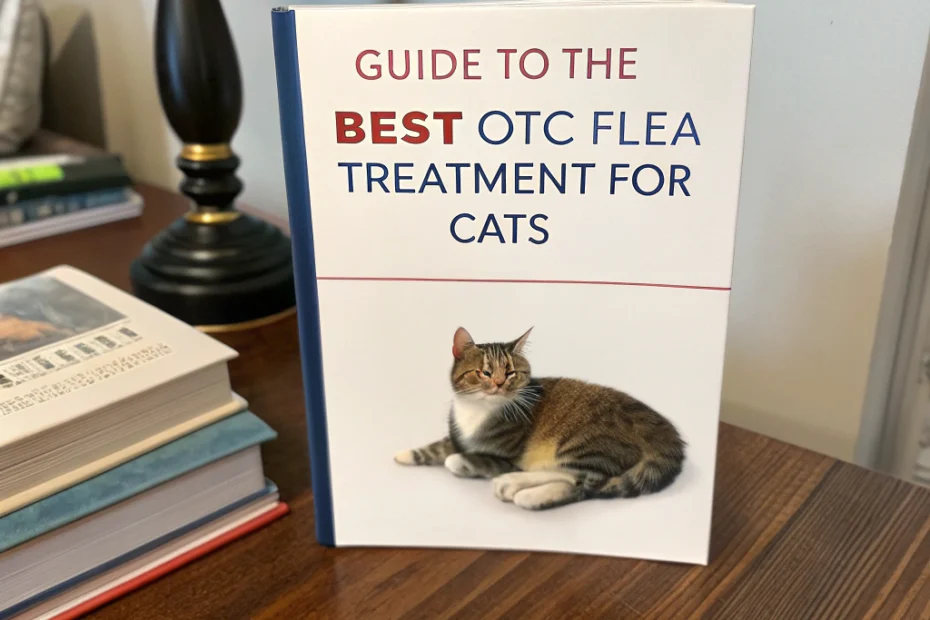At-a-Glance
Fleas can be a persistent problem for cats and their owners. Finding the best over-the-counter (OTC) flea treatment for cats is crucial in maintaining your pet’s health and comfort. These treatments are commonly used to help control flea infestations without needing a prescription. However, selecting the right product requires careful consideration of your cat’s specific needs.
How to Choose
When selecting an OTC flea treatment, several factors should guide your decision:
- Age and Weight: Ensure the product is suitable for your cat’s age and weight.
- Sensitivity: Consider any known allergies or sensitivities your cat may have.
- Application Method: Treatments come in various forms, such as topical solutions, collars, or oral tablets. Choose one that suits your cat’s temperament.
- Effectiveness: Look for products with proven efficacy in killing fleas at various life stages.
- Duration: Check how long the treatment remains effective to minimize frequent applications.
Safety & Setup
Safety is paramount when using any flea treatment. Follow these guidelines to ensure safe application:
- Read Instructions: Always read and follow the product instructions carefully.
- Avoid Overlapping Treatments: Do not use multiple treatments simultaneously without consulting a veterinarian.
- Monitor Reactions: Observe your cat for any adverse reactions post-application. If you notice anything unusual, contact your vet immediately.
- Avoid Contact with Other Pets: Keep treated cats away from other pets until the product dries or settles as directed.
Core Pillars
The core pillars of effective flea control include prevention, treatment, and maintenance. Here’s how each plays a role:
- Prevention: Regularly clean your home and wash bedding to reduce flea habitats.
- Treatment: Use appropriate OTC products as needed to address active infestations.
- Maintenance: Maintain a regular schedule of cleaning and monitoring to prevent re-infestation.
Placement & Environment Tips
The environment plays a significant role in managing fleas. Consider these tips for creating a flea-free zone:
- Laundry Routine: Wash pet bedding frequently in hot water to kill fleas and eggs.
- Chemical-Free Alternatives: Use natural deterrents like diatomaceous earth in areas where fleas are common.
- Lawn Care: Keep grass trimmed short and remove debris where fleas might thrive outdoors.
Comparison with Alternatives
The market offers various alternatives to OTC treatments, including prescription medications and natural remedies. Here’s how they compare:
- Prescription Medications: Often more potent but require veterinary approval. They may be necessary for severe infestations or sensitive cats.
- Natural Remedies: These can include essential oils or herbal solutions but may not be as effective as chemical treatments for severe cases.
FAQs
You might have several questions about using OTC flea treatments effectively. Here are some common queries answered:
- Can I use dog flea treatments on my cat?
- No, never use dog-specific products on cats as they can be toxic due to different formulations.
- How often should I treat my cat?
- This depends on the product; always follow the manufacturer’s guidelines regarding frequency of application.
- If my cat goes outdoors occasionally, do they need treatment?
- Cats that go outside even occasionally should be treated regularly as they are at higher risk of picking up fleas.
What to Do Next
If you’re dealing with a flea problem, consider starting with an OTC treatment while keeping an eye on its effectiveness and any potential side effects. Consult with a veterinarian if you’re unsure which product is best suited for your pet’s needs or if the infestation persists despite treatment efforts. Regular monitoring and environmental management will also support long-term control of fleas in your home environment.
Disclaimer: Always consult your veterinarian for personalized advice regarding your cat’s health.
